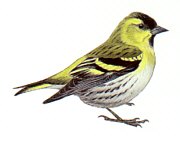|
The Society:
 HOME
HOME
 Introduction
Introduction
 Objects
Objects
 Join or renew
Join or renew
 Guest Book
Guest Book
 Hall of Fame Hall of Fame
 Products For Sale
Products For Sale
 Classifieds Ads
Classifieds Ads
 Contact Us
Contact Us
The Avicultural Journal
 Journal Archives
Journal Archives
 Exotic Bird Species
Exotic Bird Species
 Budgerigar Information
Budgerigar Information
 Canary Information
Canary Information
 Parrot Information
Parrot Information
 Finch Information
Finch Information
 General Information
General Information
 First Breeding Awards
First Breeding Awards
Affiliations:
 Affiliated Clubs
Affiliated Clubs
 Parrot Association of Canada
Parrot Association of Canada
 Avian Preservation Foundatn
Avian Preservation Foundatn
Showing Birds:
 Canadian Shows
Canadian Shows
 National Results
National Results
 Accredited Judges
Accredited Judges
Leg Bands:
 General Information
General Information
 Band Size Chart
Band Size Chart
 Trace a Band
Trace a Band
 Band Prices
Band Prices
 Order Bands
Order Bands
 Current Ring Codes
Current Ring Codes
Links:
 Links
Links
 Copyright & Privacy Policies
Copyright & Privacy Policies
|
SISKINS

The Red Siskin (Carduelis cucullata), is a member of the finch family and is a resident breeder in tropical South America in northern Colombia and northern Venezuela. The introduced population on Trinidad is believed to be extinct, with no sightings since 1960. It is commonly found in open country, forest edges and grassland with trees or shrubs.
The Red Siskin is about 4 inches long. The male is mainly deep red, with black on the head, throat, flight feathers and tail tip, and a whitish lower belly and undertail. The female is gray on the head, breast, and upperparts, apart from a red rump and upper tail. The breast is gray with reddish flanks, and the rest of the underparts, the wings and tail resemble the corresponding areas of the male. Immature females are paler than the adults, and immature males are brown rather than red. The call is a high-pitched chitter and sharp chi-tit like Indian Silverbill, and the male’s song is a musical goldfinch-like melody with twitters and trills.
Red Siskins eat seeds, and are highly gregarious. When they were more numerous they formed semi-nomadic flocks. The female is believed to lay 3 greenish white eggs in a grassy cup nest in a tree. It was common in the early twentieth century, occurring throughout the foothills of northern Venezuela but has now become extremely rare in a fragmented range.
There are only an estimated 600 to 6000 pairs of this species left in the wild. The downfall of this siskin has been massive illegal trapping for the cage bird trade. This is an attractive finch with a pleasant song, and its unique coloration for a small finch (most are predominantly yellow) has led to it being used for interbreeding with domesticated Canaries to produce varieties with red in the plumage.
|